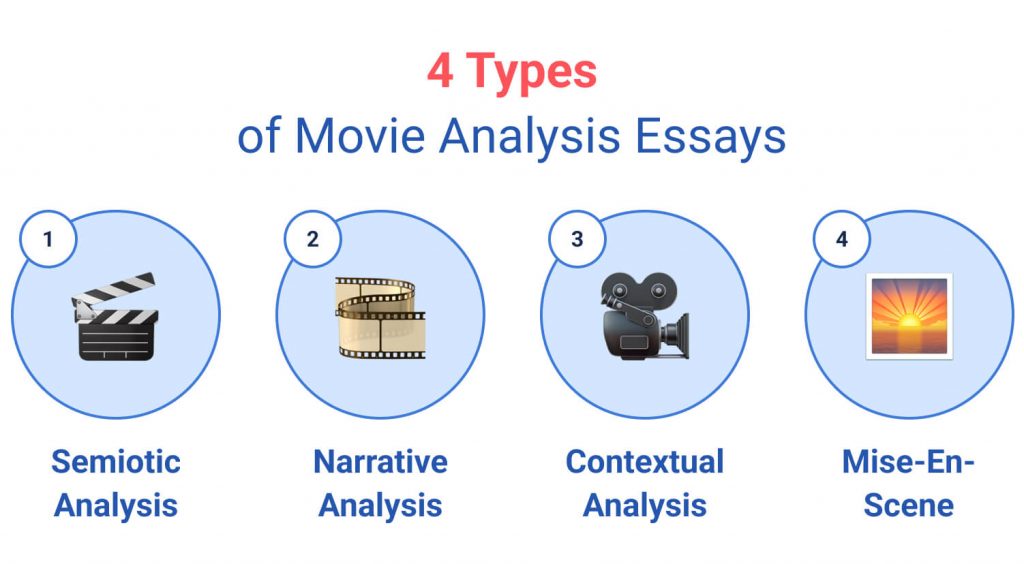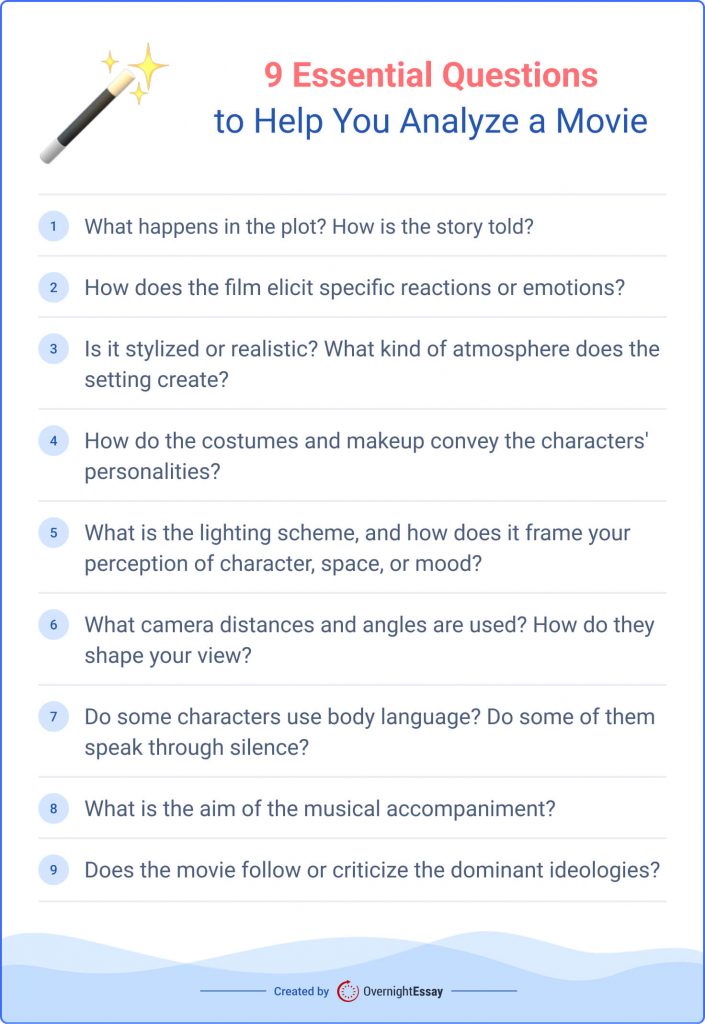Movie analysis essays offer a unique opportunity to take a closer look at narrative techniques and artistic aspects of filmmaking. A paper on this subject lets you explore themes, characters, cinematography, and other elements that make movies stand out. Students can improve their movie analysis abilities by reading our comprehensive guide! It has enough information to make you a movie critic in your own right.
Our team has covered the main film analysis essay components to help you thoroughly analyze movies. By the end of this read, you’ll understand how to pick the right motion picture and craft a film review that best captures its essence. The guide covers all the crucial steps for students to make a film analysis essay captivating and thought-provoking for readers. Let’s dive into cinema analysis and discover the secret behind excellent papers!
📽️ What Is a Film Analysis Essay?
In a film analysis paper, students should closely examine the various elements of the picture. These include directing, writing, cinematography, acting, and setting. As with any critical paper, the subject is evaluated based on specific standards. Sometimes, a film may be compared to other entries in its genre or series, for example, Star Wars vs. Star Trek.
🎞️ Types of Movie Analysis Essays
Before making a movie analysis outline, it’s essential to understand what kind of essay you want to create. There are several popular types with unique goals and aims. Understanding the difference between them helps you choose the right one for the paper you want to write.

The most common types of movie analysis essays include:
- Semiotic Analysis. This type discusses the symbols and signs represented in a particular movie. With its help, you may uncover the meaning of objects or images repeated throughout the picture. It’s also possible to show connections between different examples of imagery in the film. For example, you may discuss the meaning of oranges in The Godfather.
- Narrative Structure Analysis. This common type of analysis lets you look deeper into the various story elements, such as plot, narrative structure, and characters. For example, you may use it to explore the story and setting of Psycho.
- Contextual Analysis. In a contextual analysis, you draw connections between the film and its cultural and historical context. This works well with documentary films or movies based on real events. For example, you can describe the atmosphere of the Cold War in Red Dawn and The Hunt for Red October.
- Mise-En-Scene Analysis. If you want to go into deep detail about the beauty and meaning of scenes or single shots, mise-en-scene analysis is right for you. It lets you take a look at individual elements and interpret them. For example, you may try to explain how various details of the surroundings were depicted in Akira Kurosawa’s Yojimbo. This analysis is as effective for short films as it is for feature-length ones.
Creating a high-quality, compelling essay isn’t just about being creative. It also needs structure and a systematic approach. You can’t write it right if you don’t know how to do it. So, we’ll take a closer look at each step of this process to make your journey more comfortable. Come with us and learn what makes a movie critique essay great.
Prepare for Writing the Film Analysis Paper
Before you begin your first draft, it’s vital to prepare for the film analysis. This process is divided into five stages. We’ve decided to provide some advice and ideas for each of them. Look closely at what should be done to better prepare for this task:
Movie Analysis Format & Structure
A well-organized film essay structure will help you properly present your ideas and arguments. That is why we have provided some advice on how you should format your essay.

There are several parts you should include when writing your film critique:
- Introduction. Any good piece of writing starts with a catchy introduction. It must give readers a small taste of what the paper will be about with unique insights and analysis. One look at it should be enough to hook your readers.
- Body. After writing the perfect intro, summarize the work you’ll analyze and focus on the crucial plot points. Then, provide an analysis of the motion picture at length. Check your outline to ensure you only talk about relevant aspects. When organizing each of your paragraphs, you should remember its purpose and try not to stray off topic.
- Conclusion. The last part of your paper should summarize the main points and present your final thoughts. Don’t haste and write the first thing that comes to mind. Ensure that the conclusion is as impactful as the introductory part.
🎬 Film Analysis Template
Sometimes, students get too engrossed when watching a movie and leave out essential details. To make sure that doesn’t happen, follow this movie analysis template. It will help you retain information and avoid making mistakes.
🤩 11 Tips to Follow While Writing a Movie Analysis
A movie analysis essay writing requires exceptional attention to detail. We’ve come up with several terrific pieces of advice that will improve your writing skills regarding these assignments. They will work for you whether you’re analyzing a Tim Burton animated film or the legendary Titanic movie.
- Even if you’ve seen the work before, rewatch it. It will refresh your memories of it.
- Don’t rush things, and see the movie at least twice. Arrange your time to have the opportunity to refresh your memories of the plot details.
- Sometimes, it helps to work on the body of the paper before adding an introduction.
- Develop a clear thesis statement. It helps better organize the paper’s arguments.
- Closely investigate the audio and visual elements. They often help bring more nuance to the story and the film’s atmosphere.
- Don’t make the paper all about the plot. It should be an analysis and not a retelling of the entire story.
- To make the paper more professional, incorporate some technical jargon. For example, you may explain the techniques used by the camera crew or the editors.
- Do your best to remain objective. Your paper should analyze the movie elements and your opinions should be evidence-based.
- Compare the film to other genre entries. Try to tell how other works tackle the same subjects and utilize similar cinema elements.
- Check the structural integrity of the work. Comb the paper for any inconsistencies or sentences that seem to dangle in the air. Your text should be easy to follow.
- Finally, remember to edit. It’s important to polish the paper until you have all the facts, grammar, stylistics, and spelling in order.

💡 Interesting Topics for Film Analysis Essays
- Truth and Its Consequences in “Liar Liar” Directed by Tom Shadyac
- The Feminist Revolution in “Mona Lisa Smile” by Mike Newell
- Blade Runner’s Cyberpunk Aesthetic: A Scene Analysis
- Society and Class Distinctions in “Pride and Prejudice” Movie
- Power, Loyalty, and Betrayal in “The Godfather” by Francis Ford Coppola
- The Heroine’s Journey into “The Wizard of Oz” by Victor Fleming
- Generational Saga “Mi Familia” by Gregory Nava
- Life Is Like a Box of Chocolates: A Cinematic Journey in ‘Forrest Gump’
- Spirit of Nature and Childhood Innocence in “My Neighbor Totoro”
- Subversive Masculinity in “Fight Club” by David Fincher
- Intercultural Communication in “Lost in Translation” by Sofia Coppola
- Shakespearean Romance and Identity in “Shakespeare in Love”
We did our best to address all questions you might have had about film review writing. Feel free to use our guide and review essay examples to write excellent papers and share our articles with your friends.